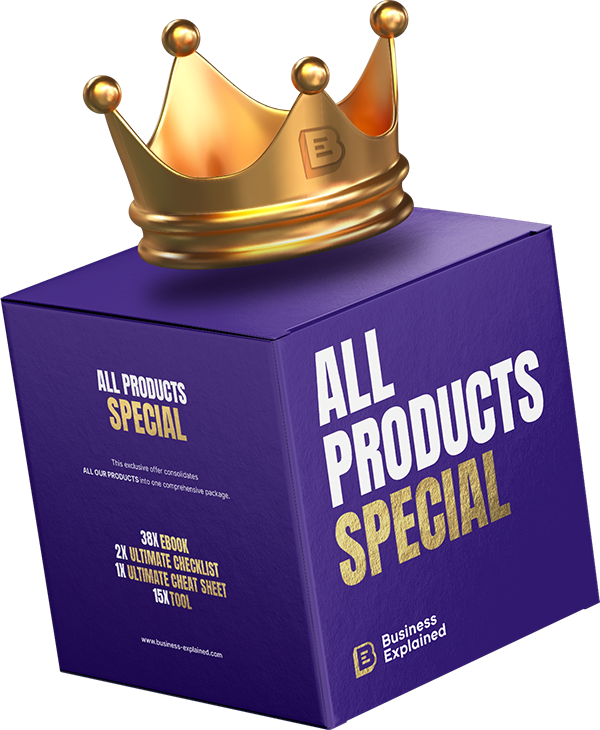In recent years e-commerce has emerged as a pivotal force, reshaping the way consumers engage with brands and make purchases. Among various e-commerce models, Business-to-Consumer (B2C) e-commerce stands out as one of the most prominent and dynamic. This blog delves into the nuances of B2C e-commerce, exploring its definition, types, advantages, disadvantages, and presenting some of the most successful examples.
What is B2C e-commerce and how does it work?
B2C e-commerce refers to the online transactions between businesses and individual consumers. In this model, businesses sell products or services directly to end-users through digital channels such as websites, mobile apps, or online marketplaces. The essence of B2C e-commerce lies in providing a seamless and convenient shopping experience to customers, allowing them to browse, select, and purchase items from the comfort of their homes.
The operational mechanism of B2C e-commerce involves several key components. Firstly, businesses establish an online presence through an e-commerce platform or website, where they showcase their products or services with detailed descriptions, images, and pricing information.
Next, consumers visit these platforms, browse through the available offerings, and add desired items to their virtual shopping carts. Upon completing the checkout process, consumers make payments using various online payment methods, and the purchased items are delivered to their specified address.
This model of e-commerce is becoming more and more popular. In 2023, the estimated value of the global B2C e-commerce market reached approximately USD 5.8 trillion, with projections indicating a compound annual growth rate (CAGR) of about 11.5% from 2024 to 2030.
Types of B2C e-commerce – what kinds of business-to-consumer e-commerce exist
B2C e-commerce can manifest in various forms, each catering to different consumer needs and preferences:
- Direct sellers – in this model, businesses sell their products or services directly to consumers through their own websites or online stores. Direct sellers have full control over their branding, pricing, and customer experience.
- Online Intermediaries – these platforms act as middlemen between consumers and sellers, facilitating transactions without owning the products themselves. Examples include online marketplaces like Amazon, eBay, or Alibaba, where multiple sellers offer their products to a wide consumer base.
- Community-based – in this model, e-commerce platforms leverage communities of users to buy, sell, or exchange goods or services. These platforms often foster a sense of belonging and trust among members, leading to more personalized transactions. Examples include peer-to-peer marketplaces like Etsy for handmade goods or Airbnb for accommodations.
- Advertising-based – e-commerce platforms in this category generate revenue primarily through advertising rather than direct sales. They offer free or subsidized services to consumers while monetizing their traffic through targeted advertising. Social media platforms like Facebook or Instagram often incorporate e-commerce features and generate significant revenue from advertising.
- Fee-based (subscription-based) – in this model, consumers pay a recurring fee to access goods or services offered by the e-commerce platform. This model is common in subscription box services, streaming platforms like Netflix, or premium membership programs such as Amazon Prime. Subscribers typically receive exclusive benefits or content in return for their recurring payments.
These various types of B2C e-commerce models offer businesses and consumers different opportunities and experiences, shaping the landscape of online retail in diverse ways.

Advantages and disadvantages of B2C (business-to-consumer) e-commerce
The business-to-consumer e-commerce model provides many advantages, but also sets a few challenges for both companies and consumers. Understanding both the advantages and disadvantages is essential for businesses looking to thrive in the ever-evolving landscape of online retail.
Advantages of B2C e-commerce
Leveraging the power of the internet, B2C e-commerce offers a myriad of advantages for both businesses and consumers alike:
- Global reach – by leveraging the internet, B2C e-commerce allows businesses to reach a global audience, transcending geographical boundaries and time zones. This expansive reach enables businesses to tap into new markets and customer segments, driving growth opportunities.
- Convenience and accessibility – one of the primary benefits of B2C e-commerce is the convenience it offers to consumers. With 24/7 accessibility, consumers can shop anytime, anywhere, eliminating the constraints of traditional brick-and-mortar stores’ operating hours and locations.
- Personalization – e-commerce platforms utilize data analytics and customer insights to personalize the shopping experience for individual consumers. Through features such as recommended products, personalized offers, and targeted marketing campaigns, businesses can enhance customer engagement and satisfaction.
- Cost efficiency – B2C e-commerce eliminates many overhead costs associated with physical stores, such as rent, utilities, and staffing. This cost efficiency allows businesses to offer competitive pricing, discounts, and promotions, attracting price-conscious consumers.
- Data-driven decision-making – e-commerce platforms generate vast amounts of data regarding consumer behavior, preferences, and purchase patterns. By analyzing this data, businesses can make informed decisions regarding product offerings, marketing strategies, and inventory management, optimizing their operations for better performance.
Disadvantages of B2C e-commerce
Despite its numerous advantages, B2C e-commerce also presents some challenges:
- Intense competition – the proliferation of B2C e-commerce has led to intense competition among businesses vying for consumers’ attention and loyalty. Standing out in a crowded marketplace requires strategic differentiation, compelling branding, and continuous innovation.
- Security concerns – online transactions involve sensitive personal and financial information, making security a paramount concern for both businesses and consumers. Instances of data breaches, fraud, and identity theft can erode trust and damage brand reputation, highlighting the importance of robust cyber security measures.
- Logistical complexities – fulfilling orders and delivering products to consumers entail logistical challenges, including inventory management, shipping logistics, and last-mile delivery. Delays, errors, or inefficiencies in the supply chain can result in customer dissatisfaction and negative reviews.
- Customer service – providing exceptional customer service in the digital realm requires proactive communication, timely assistance, and effective resolution of issues. Failing to meet customer expectations can lead to negative feedback, loss of repeat business, and reputational damage.
- Dependency on technology – B2C e-commerce relies heavily on technology infrastructure, including e-commerce platforms, payment gateways, and customer relationship management (CRM) systems. Any disruptions or technical glitches can disrupt operations, leading to lost sales and frustrated customers.
Most popular and successful B2C e-commerce examples
The world of B2C e-commerce has seen a remarkable evolution over the years, with several standout examples reshaping consumer habits and business landscapes alike. These companies have not only demonstrated innovation in their respective industries but have also adapted to changing consumer preferences and technological advancements. Here are some of the most popular and successful B2C e-commerce examples that have made significant impacts on global markets.
- Amazon – as the world’s largest online retailer, Amazon offers an extensive selection of products ranging from electronics and books to household essentials and fashion items. With its Prime membership program, fast shipping options, and AI-powered recommendations, Amazon has redefined the e-commerce landscape.
- Alibaba – based in China, Alibaba is a global B2C marketplace connecting millions of buyers and sellers worldwide. Through its platforms such as Taobao and Tmall, Alibaba facilitates cross-border trade and enables small businesses to access international markets.
- Netflix – as a leading subscription-based streaming service, Netflix revolutionized the entertainment industry by providing on-demand access to a vast library of movies, TV shows, and original content. With a user-friendly interface and personalized recommendations, Netflix has garnered a loyal subscriber base globally.
- Spotify – Spotify has transformed the way people discover, listen to, and share music through its innovative music streaming platform. With its vast library of songs, personalized playlists, and social sharing features, Spotify has become a staple for music lovers worldwide, showcasing the power of B2C e-commerce in the digital music space.
- Walmart – Walmart, a retail giant, has successfully transitioned into the world of B2C e-commerce, offering customers a diverse range of products through its online platform. With its vast network of physical stores complemented by an intuitive online shopping experience, Walmart has cemented its position as a leader in the omnichannel retail landscape.
B2B vs B2C e-commerce – difference between B2B and B2C in e-commerce
B2B (Business-to-Business) and B2C (Business-to-Consumer) are two primary models in e-commerce, each tailored to meet the distinct needs of their respective markets. While they share commonalities in leveraging online platforms for transactions, there are fundamental differences between the two.
Target audience
- B2B focuses on transactions between businesses, catering to professionals and organizations.
- B2C targets individual consumers, offering products and services directly to end-users.
Transaction dynamics
- B2B transactions typically involve larger order volumes, longer sales cycles, and personalized negotiations tailored to meet the specific needs of each business client.
- B2C transactions are characterized by smaller order sizes, shorter sales cycles, and a focus on creating seamless, user-friendly shopping experiences to drive individual purchases.
Marketing strategies
- B2B e-commerce requires specialized marketing efforts aimed at reaching decision-makers within companies. Strategies often involve targeted campaigns, industry-specific content, and relationship-building initiatives.
- B2C e-commerce employs marketing strategies designed to resonate with individual preferences and lifestyles. These may include social media advertising, influencer partnerships, and personalized recommendations to enhance the consumer shopping experience.
Product nature
- B2B offerings often revolve around complex or specialized products/services, custom solutions, or bulk orders tailored to meet the unique requirements of business clients.
- B2C e-commerce encompasses a broad spectrum of consumer products, ranging from everyday commodities to luxury items, catering to individual tastes and preferences.
Platform features
- B2B e-commerce platforms are geared towards facilitating bulk purchasing, offering features such as personalized pricing, account management, and integration with procurement systems.
- B2C platforms prioritize user-friendly features like intuitive navigation, secure payment gateways, product recommendations, and customer reviews to optimize the consumer purchasing journey.
And so, B2C e-commerce continues to redefine the retail landscape, offering businesses unprecedented opportunities to connect with consumers and drive growth. By understanding the intricacies of B2C e-commerce, businesses can leverage its advantages while mitigating potential challenges, ultimately fostering long-term success in the digital marketplace.



 Risk-free Purchase: Full refund within 14 days
Risk-free Purchase: Full refund within 14 days



